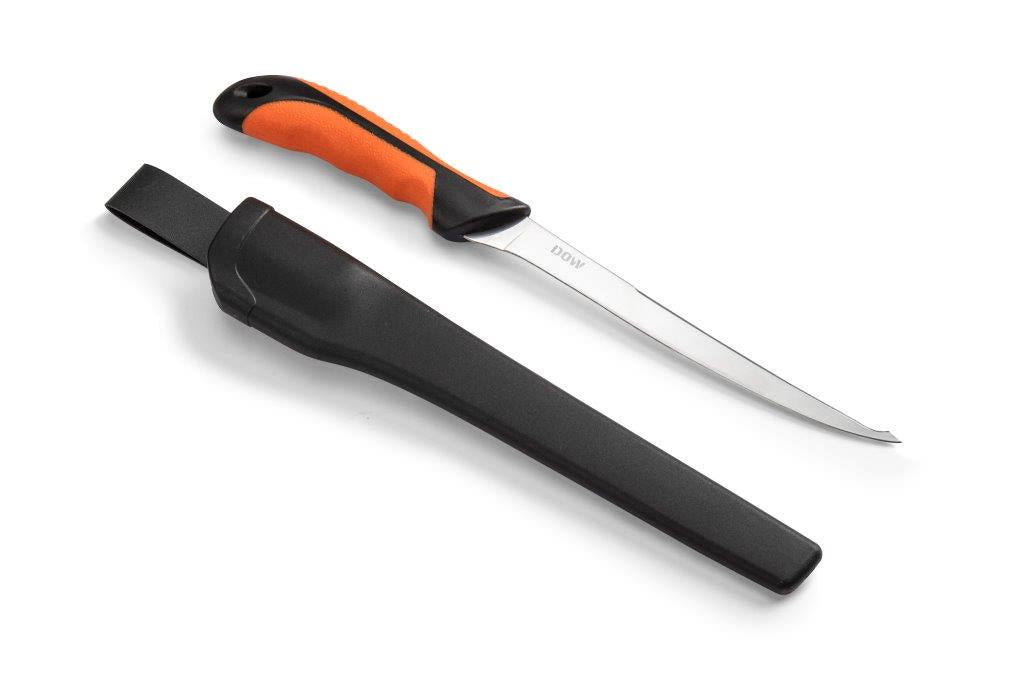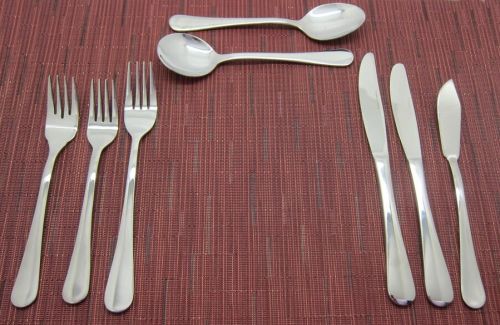Discover the Essential Functions to Try To Find in a Top-Quality Fish Knife
When choosing a fish knife, several key attributes require attention. The blade material dramatically influences resilience and sharpness, while versatility plays a crucial function in accuracy. In addition, the manage design affects comfort throughout extended use. Side retention and safety attributes are likewise vital for sensible use. Understanding these components will guide customers toward making an informed selection, yet the subtleties of their relevance might not be instantly clear.
Blade Material and Building
The performance of a fish knife greatly depends upon its blade product and building and construction - fish knife. Top quality fish knives normally include blades made from stainless steel, high-carbon steel, or a combination of both. Stainless steel is preferred for its deterioration resistance and low upkeep, making it perfect for freshwater and deep sea settings. High-carbon steel, while prone to rusting, uses premium sharpness and edge retention, interesting those who prioritize reducing performance
The building and construction of the blade likewise plays a vital role in its efficiency. Full-tang blades, which extend the whole length of the manage, offer enhanced toughness and balance. On the other hand, partial-tang blades might jeopardize sturdiness. Additionally, the thickness of the blade must be taken into consideration, as thinner blades allow for extra accurate cuts, crucial for delicate fish filleting. Inevitably, a well-constructed blade, using the appropriate materials, is fundamental for accomplishing the most effective outcomes when preparing fish.
Blade Versatility and Size
Blade versatility and length are critical elements that substantially affect the performance of a fish knife. A versatile blade allows for precise cuts and the ability to maneuver around bones and skin, making it essential for filleting fish efficiently. The best quantity of versatility can improve control, allowing the individual to attain tidy, smooth cuts with minimal initiative.
In terms of size, fish blades generally vary from 6 to 9 inches. A longer blade is useful for bigger fish, offering the reach needed for reliable filleting. On the other hand, a shorter blade provides maneuverability, making it suitable for smaller sized fish or complex jobs.
Eventually, the option of versatility and size should straighten with the particular angling requirements and preferences of the individual. A healthy combination of these features makes sure optimal performance, enhancing the general fish prep work experience.
Manage Design and Comfort
A properly designed handle is necessary for guaranteeing convenience and control when using a fish knife. The handle must fit firmly in the hand, enabling a company grip during detailed tasks such as filleting or skinning fish. Products like rubber, timber, or composite offer various levels of comfort and traction, influencing the user's experience.
Ergonomic attributes are likewise essential; contours that comply with the natural shape of the hand can lower exhaustion during extended use. Furthermore, the take care of's appearance plays a considerable function in preventing slippage, particularly when collaborating with wet hands.
Weight distribution is an additional factor that adds to the general equilibrium of the knife, enhancing maneuverability. A comfortable take care of design not just enhances efficiency yet additionally promotes security, as a safe and secure grip minimizes the risk of mishaps (fish knife). Inevitably, a thoughtful take care of style can dramatically boost the performance of a fish knife in cooking applications
Side Retention and Developing
While utilizing a fish knife, keeping a sharp edge is important for achieving tidy cuts and exact filleting. A high quality fish knife ought to display exceptional edge retention, permitting it to remain sharp through numerous uses. This particular is typically figured out by the sort of steel made use of in the blade; high-carbon stainless steel is frequently favored due to its balance of solidity and rust resistance.

Security Attributes and Sheath Options
Various safety and security features and sheath alternatives are important factors to consider when selecting a fish knife. A protected and ergonomic deal with reduces the risk of slips during use, improving user security. Textured grasps and finger guards even more prevent crashes, enabling for better control while filleting fish.
In addition, a blunt idea can reduce the risk of slit injuries, making it a more secure selection for amateur individuals.
Sheath choices likewise play an important function in security. A well-designed sheath safeguards the blade, protecting against accidental cuts when the knife is kept or transferred. Sheaths made from long lasting products, such as nylon or difficult plastic, deal added security against ecological components.
Some sheaths feature belt clips more info or loops, making certain the knife is easily available while remaining protected. Ultimately, prioritizing safety features and sheath alternatives contributes substantially to the total capability and customer experience of a fish knife.
Frequently Asked Questions
What Is the Best Brand Name for Fish Blades?
The most effective brand for fish blades frequently varies by preference, but popular names like Wüsthof, Victorinox, and Reject are often advised for their craftsmanship, intensity, and resilience, making them top selections among cooking fanatics and specialists alike.
Can Fish Blades Be Made Use Of for Other Sorts Of Fish?
Fish blades can indeed be used for various other kinds of fish. Their style and sharpness make them versatile enough for various fish species, enhancing the general experience of filleting and preparing different types of seafood.

Exactly how Do I Clean and Preserve My Fish Knife?
To keep a fish and cleanse knife, rinse it with warm water after use, delicately scrub with moderate soap, dry thoroughly, and store in a protective sheath to protect against damages and deterioration. Normal honing is vital.
Are There Fish Blades Especially for Left-Handed Users?
Yes, there are fish knives created specifically for left-handed customers. These knives include reversed blade angles and ergonomic takes care of, making sure convenience and performance for left-handed individuals while filleting and preparing fish. Quality alternatives are offered from various manufacturers.
What Is the Cost Variety for Top Quality Fish Knives?
Quality fish blades usually range from $20 to $150, depending upon products, brand reputation, and workmanship. Higher-end choices may feature superior functional designs and specific designs, while budget-friendly selections still supply sufficient performance for casual customers.
The effectiveness of a fish knife largely hinges on its blade material and construction. Premium fish knives normally feature blades made from stainless steel, high-carbon steel, or a mix of both. Blade flexibility and size are important variables that substantially affect the performance of a fish knife. Fish blades can indeed be utilized for various other kinds of fish. These knives feature reversed blade angles and ergonomic takes care of, guaranteeing comfort and performance for left-handed individuals while filleting and preparing fish.